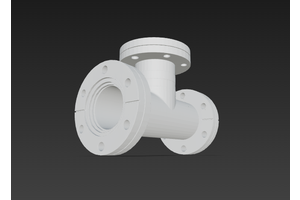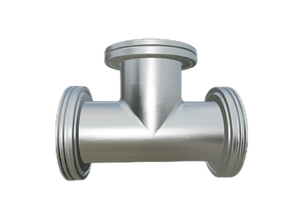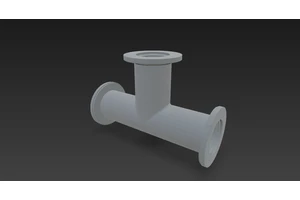-
Vacuum Pumps: Types, Functions, and Industrial Uses
Vacuum pumps are the heart of vacuum technology. Each type serves specific industries and applications.Rotary Vane PumpsWidely used in rough vacuum applications like packaging and drying.Turbomolecular PumpsEssential forhigh vacuumandultra-high vacuumenvironments in semiconductor and research labs.Cryogenic PumpsIdeal for capturing light gases like hydrogen and helium at very low pressures.Dry PumpsPreferred in clean industries such as semiconductor manufacturing, since they avoid oil contamination.ConclusionDifferentvacuum pumpsserve unique functions, making them critical tools across healthcare, aerospace, and semiconductor industries.
View -
Future Potential Applications of Vacuum Technology
Vacuum systems have already transformed industries, but their future potential is even more exciting.Semiconductors and Quantum ChipsFuturevacuum technology in semiconductorswill support smaller nodes and quantum computing, requiring stable ultra-high vacuum conditions.Aerospace and Space ExplorationVacuum systems in aerospaceare vital for spacecraft testing, propulsion research, and satellite development.Clean Energy SolutionsVacuum technology for clean energywill support solar cell production, hydrogen fuel storage, and next-generation battery manufacturing.Healthcare and BiotechnologyInvacuum technology in healthcare, sterilization, pharmaceutical packaging, and tissue engineering will continue to advance.ConclusionThefuture applications of vacuum technologywill extend across semiconductors, aerospace, clean energy, and healthcare—making it one of the most versatile technologies of the 21st century.
View -
Latest Vacuum Technologies in Semiconductor Manufacturing
The semiconductor industry relies heavily on vacuum technology to produce smaller, faster, and more efficient chips. As demand rises, new vacuum innovations are reshaping the future of chipmaking.Advanced Dry PumpsModern fabs use dry vacuum pumps instead of oil-based pumps to eliminate contamination risks. These pumps handle corrosive gases and improve energy efficiency.Ultra-High Vacuum SystemsProcesses likeEUV lithographyand atomic layer deposition (ALD) require ultra-high vacuum (UHV), which reaches pressures below 10⁻⁹ mbar. This ensures minimal contamination.Cryogenic PumpsCryo pumps trap gases at extremely low temperatures, particularly hydrogen and water vapor, which are problematic in fabrication.IoT-Enabled Smart SystemsToday’svacuum technology in semiconductorsis connected. IoT sensors monitor pressure, vibration, and performance, helping predict maintenance and reduce downtime.ConclusionThe latestvacuum technologies in semiconductor manufacturingenable cleaner, smarter, and
View -
Gas Pressure and Vacuum Level: Understanding the Connection
The concepts of gas pressure and vacuum level are closely linked, and understanding their relationship is key to mastering vacuum technology.What Is Gas Pressure?Gas pressure is the result of countless molecules colliding with the walls of a container. At atmospheric pressure, this amounts to about 1013 mbar.What Is Vacuum Level?A vacuum level describes how much pressure inside a system has been reduced compared to atmospheric conditions. A better vacuum means fewer gas molecules remain.The RelationshipHigher pressure = lower vacuum qualityLower pressure = higher vacuum qualityIn other words, vacuum is essentially the reduction of gas pressure.ApplicationsInsemiconductor manufacturing, ultra-high vacuum ensures that particles don’t interfere with chip production. Inaerospace engineering, vacuum chambers replicate outer space.ConclusionThe link betweengas pressure and vacuum levelis simple yet powerful: reducing pressure increases vacuum quality. This principle drives nearly every indus
View -
The Basics of Vacuum Technology: Principles and Definitions
Vacuum technology is the science and engineering of creating, maintaining, and using environments with lower-than-atmospheric pressure. It is a critical foundation for industries ranging from semiconductor manufacturing to aerospace research. By understanding the principles of vacuum and how it relates to gas pressure, we can see why this technology is so vital for modern industry.What Is Vacuum Technology?At its core, vacuum refers to the absence or near-absence of gas molecules in a space. Normal air at sea level has a pressure of about 1013 mbar (760 Torr). When gas molecules are removed, the pressure decreases, and a vacuum is created. The deeper the vacuum, the fewer molecules remain.Levels of VacuumRough Vacuum (10³ to 1 mbar):Used in industrial processes like packaging and drying.High Vacuum (10⁻³ to 10⁻⁷ mbar):Required for processes such as thin-film deposition.Ultra-High Vacuum (10⁻⁷ mbar and below):Necessary for semiconductor fabrication, surface science, and particle acceler
View -
Future Potential Applications of Vacuum Technology
Vacuum technology has long been a cornerstone of industries such as semiconductor manufacturing, aerospace, and scientific research. As global industries demand cleaner, more precise, and more sustainable processes, the scope offuture applications of vacuum technologycontinues to expand. Looking ahead, several fields are expected to benefit from advanced vacuum systems.1. Next-Generation Semiconductor ManufacturingOne of the most importantfuture applications of vacuum technologylies insemiconductor manufacturing. With the move toward smaller nanometer nodes and advanced packaging, processes like extreme ultraviolet (EUV) lithography and atomic layer deposition (ALD) requirevacuum technology in semiconductorsto maintain ultra-clean environments. This ensures higher yields, reduced contamination, and reliable chip performance.2. Space Exploration and Aerospace EngineeringThe role ofvacuum systems in aerospaceis becoming increasingly important. As human space exploration grows, vacuum cha
View -
The Relationship Between Gas Pressure and Vacuum Level
In vacuum technology, understanding the relationship between gas pressure and vacuum level is essential. Whether it is in semiconductor manufacturing, laboratory research, or industrial applications, pressure and vacuum are two sides of the same coin. The deeper the vacuum, the lower the gas pressure inside the chamber. Let’s explore how these two concepts connect.1. Defining Gas PressureGas pressure refers to the force exerted by gas molecules when they collide with the walls of a container. At atmospheric conditions, air pressure at sea level is about 1013 mbar (or 760 Torr). As the number of gas molecules decreases, pressure drops. This reduction in gas density forms the foundation of vacuum technology.2. What Vacuum Level Really MeansVacuum level describes how much the pressure inside a system is reduced compared to the normal atmosphere. A “high vacuum” means very few gas molecules remain inside the chamber. For example, a low vacuum might still have pressures around a few milliba
View -
Latest Vacuum Technologies in Semiconductor Manufacturing
Vacuum technology plays a critical role in semiconductor manufacturing, as it provides the clean and controlled environment necessary for processes like deposition, etching, and lithography. With the continuous push for smaller, faster, and more energy-efficient chips, vacuum systems are evolving to meet higher demands in precision, efficiency, and reliability. Below are some of the latest developments in vacuum technology for semiconductor manufacturing.1. Advanced Dry Vacuum PumpsTraditional oil-sealed pumps are no longer suitable for modern fabs, where contamination must be avoided at all costs. Today, dry vacuum pumps with improved thermal control, corrosion resistance, and energy efficiency are widely used. These pumps can handle harsh process gases generated during etching and deposition, while also reducing downtime and maintenance costs.2. Ultra-High Vacuum (UHV) SystemsAs semiconductor nodes shrink below 5nm, achieving ultra-clean environments becomes essential. UHV technology
View -
The Concept and Classification of Vacuum Technology
Concept of Vacuum TechnologyVacuum technology refers to the science and engineering methods used to create, measure, and maintain environments with air pressure lower than the atmosphere. In such conditions, the number of gas molecules is greatly reduced, which allows processes and experiments that cannot be performed under normal pressure. Vacuum technology is essential in many modern industries, including electronics, aerospace, materials science, medical devices, and scientific research.Classification of Vacuum TechnologyVacuum technology is commonly classified according to the pressure range and the methods used to achieve it. The main categories include:Low Vacuum TechnologyPressure slightly lower than atmospheric pressure.Often achieved with simple pumps.Applications: food packaging, vacuum molding, basic drying processes.Medium Vacuum TechnologyReaches pressures much lower than low vacuum.Requires more advanced pumps such as rotary pumps or mechanical boosters.Applications: coat
View -
International Standard Classification of Vacuum Levels
Vacuum levels are classified internationally based on the pressure range within a vacuum system. These categories help researchers, engineers, and manufacturers describe and compare different vacuum conditions in a consistent way. The most widely accepted classification divides vacuum into the following levels:Low Vacuum (Rough Vacuum)Pressure range:100,000 Pa to 100 PaTypical applications: vacuum packaging, basic laboratory work, simple industrial processes.Medium VacuumPressure range:100 Pa to 0.1 PaTypical applications: coating processes, some analytical instruments, and vacuum furnaces.High VacuumPressure range:0.1 Pa to 10⁻⁵ PaTypical applications: electron microscopy, mass spectrometry, and thin-film deposition.Ultra-High Vacuum (UHV)Pressure range:below 10⁻⁵ Pa to 10⁻¹⁰ PaTypical applications: surface science experiments, particle accelerators, and semiconductor manufacturing.Extreme High Vacuum (XHV)Pressure range:below 10⁻¹⁰ PaTypical applications: advanced physics research, s
View
Wiki





